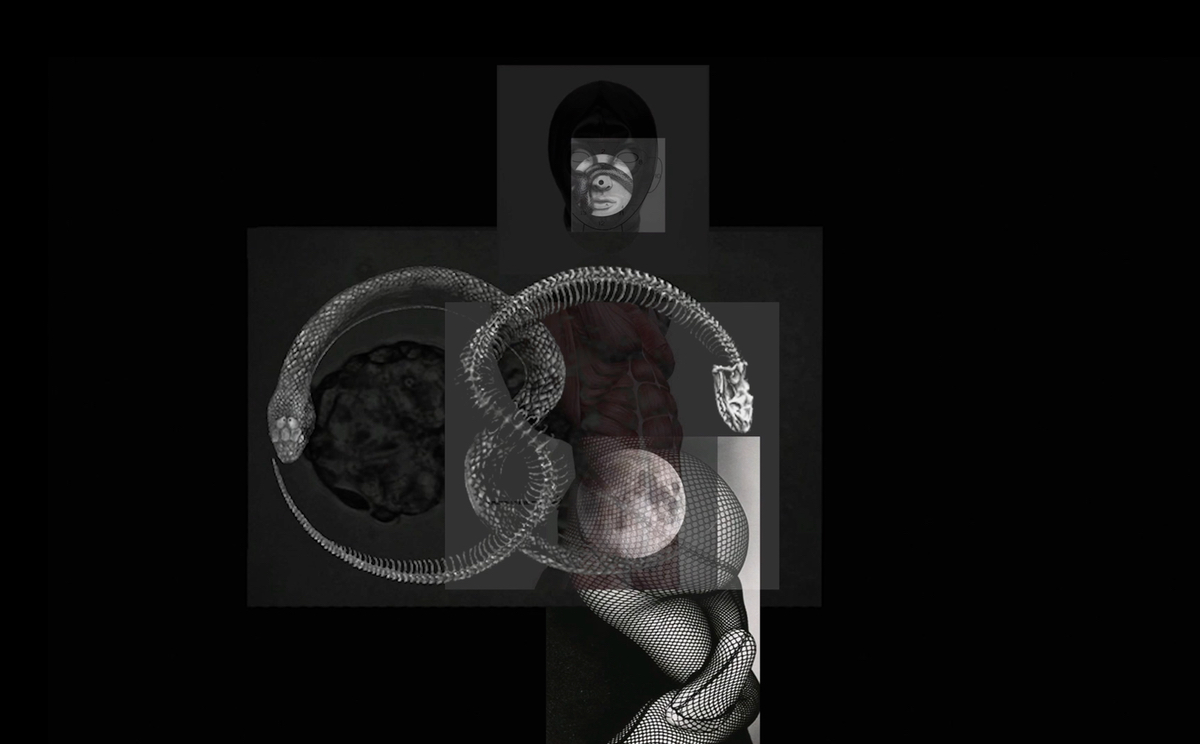LABOUR and visual artist Evelyn Bencicova explore the constructible nature of the self with a shifting collage of contrasting imagery.
Farahnaz Hatam and Colin Hacklander settled on the name LABOUR in response to British philosopher Christopher J. Arthur’s reading of Karl Marx. Arthur defines labour in the Marxist sense as “the ontologically fundamental productive activity in and through which one becomes what one is.” “The objective person is therefore the result of one’s own labour”, continues Arthur, “labour is one’s coming-to-be-for-oneself.”
In this sense the performance practice of Hatam and Hacklander revolves around a recontextualisation of this process – an exploration of the work a person does to become themselves, the different forms this work can take and, ultimately, the ways in which this work functions in the construction, and deconstruction, of the self.
This deconstructionist approach to the existential questions central to LABOUR’s work is perfectly illustrated in the visual component of their very first performance piece, ‘next time, die consciously (بیگانگی)’. The visual artist and photographer Evelyn Bencicova presents a continually shifting collage of contrasting images depicting life, death, organic material and artificial forms, arranged in synthetic assemblages that are in constant states of transformation.



By superimposing these contrasting images on top of each other, Bencicova is able to create recognisable forms in flux, constructing, deconstructing and reconstructing bodies using a diverse photographic palette, ranging from microscopic images of insects and x-rays of human skeletons to esoteric imagery of serpents, idols and totems. In this way she gestures towards fundamentally human states of creation and formation, underpinning them with a mutant eroticism in which physical body parts, animals and synthetic prostheses are interchangeable with one another.
The result is a depiction of becoming in which the work fundamental to the process is foregrounded. The act of arranging and rearranging images central to the visual component of ‘next time, die consciously (بیگانگی)’ is presented as the work that is essential to the creation of a fluid assemblage of the self, a self which is eminently constructed and immediately transformed as the images from which it is fabricated phase in and out with one another.



This transformational process is mirrored by Hatam and Hacklander’s stochastic composition, in which microsound synthesis and percussive patterns are dictated by randomly generated elements derived from mathematical functions. In a similar way, dissonant sequences of synthesis resonate with rhythmic drum cycles, resulting in a score that continually changes as different sounds are layered on top of each other.
During the premiere of ‘next time, die consciously (بیگانگی)’ at the 2018 edition of Berlin Atonal, Evelyn Bencicova was assisted by by Jakub Gavalier and Jakub Kubica in projecting these images on floor-to-ceiling screens inside the former power station Kraftwerk.
For more information about LABOUR and their work you can follow them on Instagram and visit Farahnaz Hatam and Colin Hacklander’s website.
Watch next: LABOUR Presents – next time, die consciously (بیگانگی) – Part One





